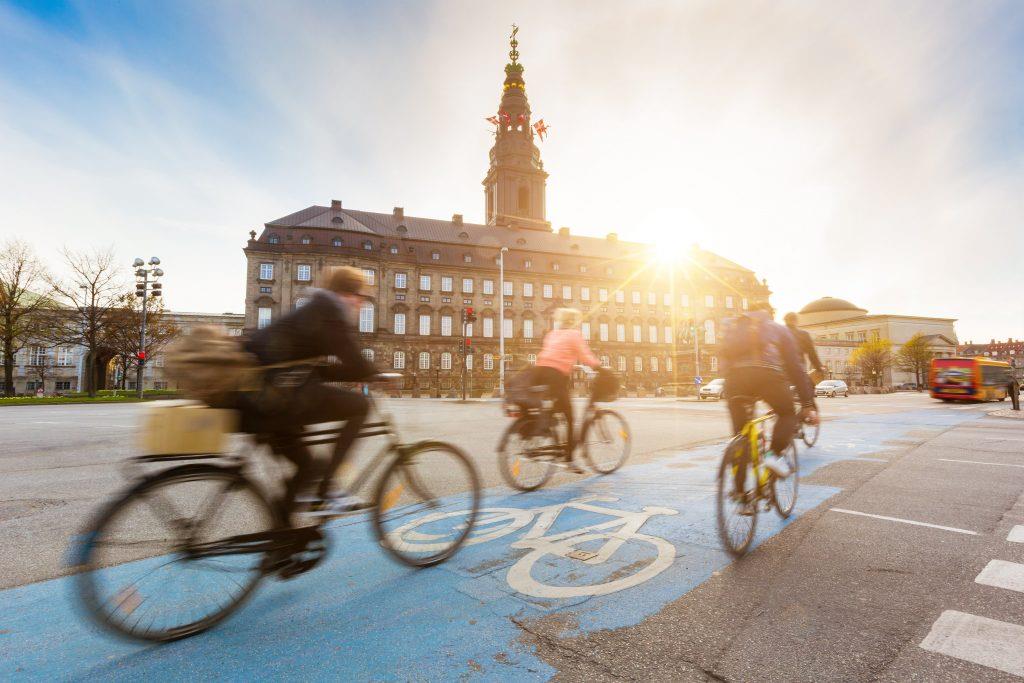
Copenhagen Chose Calm, Lal Chowk Can Too
Representational Photo
By Hidayat Bukhari
Cities everywhere are rethinking how people move through their busiest streets.
From Istanbul's Sultanahmet to the walkable promenades of Copenhagen, the idea stays the same: a city works best when its heart breathes, instead of choking on traffic.
ADVERTISEMENTAs Srinagar plans its own mobility shift, especially around Lal Chowk and nearby markets, the global push for clean energy, shared transport, and people-friendly spaces feels more important than ever.
Srinagar's historic centre sees tens of thousands of people every day. Students rush to classes, office workers squeeze through tight schedules, families visit hospitals, shopkeepers lift their shutters, and tourists arrive to feel the pulse of the city.
On a typical weekday, around 35,000 to 40,000 vehicles enter the wider Lal Chowk area through MA Road, Residency Road, Dalgate, Jehangir Chowk and nearby routes.
What stands out is how people choose to travel.
More than 60% of these vehicles are private cars and two-wheelers. But they carry less than 20% of the total commuters.
Most people are moving in the least space-efficient way, taking up the most road space while transporting the fewest passengers.
This is where small, clean-energy vehicles like e-rickshaws can shift the balance.
An e-rickshaw uses only about 3 to 5 kWh of electricity for a full charge. That is roughly equal to just half a litre of petrol. One charge usually covers 70 to 90 kilometres, which means it can make many short trips in a day without releasing any tailpipe pollution.
On the other hand, a regular petrol car emits 120 to 150 grams of CO2 for every kilometre it travels.
So, if an e-rickshaw takes over even 40 kilometres of short trips that would otherwise be done by a private car, the city prevents around 5 to 6 kilograms of carbon emissions in a single day from just one vehicle.
Add a few hundred of these e-rickshaws to the city centre, and the environmental benefits start to show very fast.
There is also the question of how efficiently a road space is used.
On Srinagar's busiest roads, a private car takes up about 8 to 10 square meters of space and usually carries just one person. An e-rickshaw takes less than half that space, but it keeps moving 8 to 12 passengers every hour through short, quick trips.
Over a full day, one e-rickshaw can serve 120 to 160 passengers. A private car used only for commuting might move just two or three people in total.
This difference in efficiency is hard to ignore in a city where every square foot of road is precious. The economic benefits are also clear.
When a commercial centre is easy to walk around, convenient to reach, and free from big vehicles, more people visit the shops.
In Chandni Chowk in Delhi and Church Street in Bengaluru, studies found retail visits rose by 18-25% after the areas became safer and less crowded.
Internationally, Copenhagen found that when it created calm mobility corridors, it brought four times more daily pedestrians over the decades, boosting local businesses in the process.
A similar model could work in Srinagar.
In the Lal Chowk area, where businesses depend heavily on walk-in customers, students, and daily repeat shoppers, shifting toward cleaner, smaller vehicles encourages more walking, easier street crossings, and longer stays.
All of it adds up to a busier, more successful marketplace.
Energy use tells an even stronger story. One litre of petrol holds around 8.9 kWh of energy, but a normal petrol car turns only 20 to 25% of that into actual movement. The rest is lost as heat.
An e-rickshaw, on the other hand, uses electricity far more efficiently. More than 80% of the energy goes straight into moving passengers.
So when hundreds of short trips in the city centre shift from fuel to electric power, the energy savings add up fast.
In busy areas like Lal Chowk, where thousands of quick rides happen every day, this efficiency helps the city become quieter, cleaner, and less dependent on fuel.
But the impact is not just environmental or economic. It is social.
Around Lal Chowk, MA Road, and Residency Road, more than 60,000 students live their daily routines alongside office workers, shoppers, and people visiting clinics.
For many of them, e-rickshaws offer what they need most: an affordable, reliable, and accessible ride.
They act as the city's most flexible last-mile option, quickly connecting people from bus stops and shared taxi stands to the inner commercial lanes where bigger vehicles struggle to move.
Cities that improved their mobility systems, including Singapore, Seoul, Madrid, and even parts of Delhi, did it by strengthening these last-mile electric services.
If Srinagar wants Lal Chowk to feel cleaner, calmer, and more in line with global city centres, the answer may not be to push out small electric vehicles. Instead, we need to control how many private cars enter the core.
Many cities do this by building parking hubs at the edge of busy districts.
In Singapore, for example, large parking facilities sit outside the main shopping zones. Srinagar could follow a similar approach around Batamaloo to hold most of the cars coming into the centre.

Legal Disclaimer:
MENAFN provides the
information “as is” without warranty of any kind. We do not accept
any responsibility or liability for the accuracy, content, images,
videos, licenses, completeness, legality, or reliability of the information
contained in this article. If you have any complaints or copyright
issues related to this article, kindly contact the provider above.


















Comments
No comment